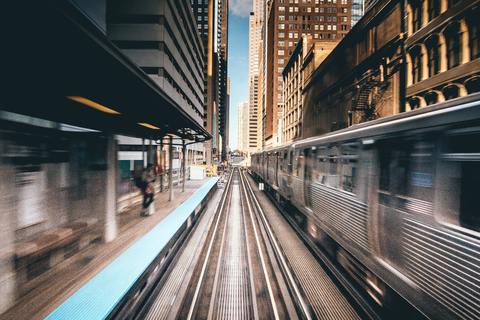
Smart City in Luxembourg: What Future?
Smart Home, Smart Meter, Smart Grid, Smart City... Is “smartness” a fashion, or is it a real transition? What exactly do these terms mean? Being able to remotely control one's connected home using home automation solutions and making it autonomous: these are dreams that have been coming true for several years. But there is no question of stopping there! Thanks to smart meters, technological innovation is infiltrating entire cities to make them intelligent... So what is the future of the Smart City in Luxembourg? What can we expect? An answer in 4 steps
“Smart Meter”: Definition and Advantages of the Smart Meter
Definition
Smart Homes are becoming more and more accessible, but not yet for everyone. Indeed, home automation solutions and other related technologies can be costly.
In this context, how can entire cities be made smart?
There is only one answer to this question: The Smart Meter.
This is a meter that measures the energy consumption of occupants (for water, electricity and gas) precisely and in real time.
It then transmits the collected information to a backup system so that it can be analysed at the level of the existing electricity network.
The implementation of this type of smart meter began several years ago. Better still, it is accelerating day by day.
The aim? To facilitate the energy transition.
And how? Through optimal management of energy resources in living spaces.
The Benefits of the Smart Meter for Individuals
There are many benefits for individuals:
- A better management of energy consumption. In particular, the my.enovos.lu website allows users to view and analyse their personal data. Abnormal peaks in consumption and significant variations compared to previous periods can be detected. It is then easier to adapt your consumption in order to save money.
- No more meter reading data to manage, thanks to remote reading.
- Monthly billing, so you only pay for the energy you actually use.
- Greater reactivity thanks to the absence of manual intervention in the event of a problem.
For the Grand Duchy as a whole, the benefits are no less significant, with, in particular, a more sustainable and efficient distribution of energy, thanks to better management of energy resources.
What Changes Have Been Observed as a Result of the Deployment of Smart Meters?
All energy stakeholders have observed positive changes as a result of the deployment of Smart Meters.
- Electricity suppliers can better take into account the real consumption of inhabitants. Thus, they can better diversify their price offer and adapt it to the needs of their customers.
- Electricity producers can use simplified electrical equipment, thanks to a better visibility of the periods during which they have to produce electricity.
- Services for a more sustainable use of electricity can be implemented by grid operators. Instant monitoring of the quality of supply, remote operations (connection, power adjustments, etc.), as well as reduced intervention time in case of failure are also strong assets.
- Finally, local authorities also have better visibility on the network reinforcement work to be carried out. They are informed in real time of the quality of the service provided.
On the whole, the development of Smart Meters allows, thanks to the large amount of collected data, a more precise follow-up of the consumption of buildings, and therefore the identification of new opportunities for potential savings.
Smart Grids: When Electricity Networks Become Intelligent for a Sustainable Future
This term is used to designate an electrical energy distribution system able to automatically and autonomously adapt production to demand.
To achieve this variation in production, the Smart Grid relies on a network of sensors working in real time, as well as on data transmission and computer analysis systems.
The expected result is to secure and optimize the efficiency of production methods and to guarantee minimum consumption of energy resources.
Smart Grids are fully in line with the main principles of sustainable development: they integrate a rational use of renewable energies (solar, wind, etc.).
In short: a balanced mix for continuous electricity production!
These intelligent networks of the future adjust the flow of electricity between suppliers and consumers. They also link buildings that can exchange their heat by pooling their needs.
The heat released during the production of cold for shops, for example, could be recovered and used to produce hot water for homes.
Improving the quality of life of inhabitants without impacting the environment is a challenge that motivates actors, decision-makers and inhabitant of sustainable cities on a daily basis.
This is why solar energy, geothermal energy, biomass and hydrogen are at the heart of the energy transition driven by the “Smart City”.
Co-production between inhabitants, local self-consumption and the reuse of energy produced in heating networks are also solutions that have already been deployed in some cities.
Smart City in Luxembourg: What Does the Smart City of Tomorrow Look Like?
For a sustainable, green future, and in order to cope with global warming and the growing urban population, reinventing the city of tomorrow is becoming increasingly urgent.
Changing cities are now adopting an urban development model where smart meets sustainable.
More than a simple digital city, the Smart City in the Luxembourg of the future will be a great technological advance. Anchored in sustainable development, it will make it possible to reduce the carbon footprint of countries.
This concept also relies on trees and vegetation, by creating and preserving green corridors, urban forests and natural spaces in the heart of the urban space.
These actions are a reliable and sustainable way for cities of the future to fight air pollution. They mitigate heat islands, regulate temperatures and preserve the ecological balance of ecosystems.
Natural resources such as water are also better stored and protected.
Smart Homes and the ecological transition are therefore closely linked and represent the image of the Smart City of tomorrow.
